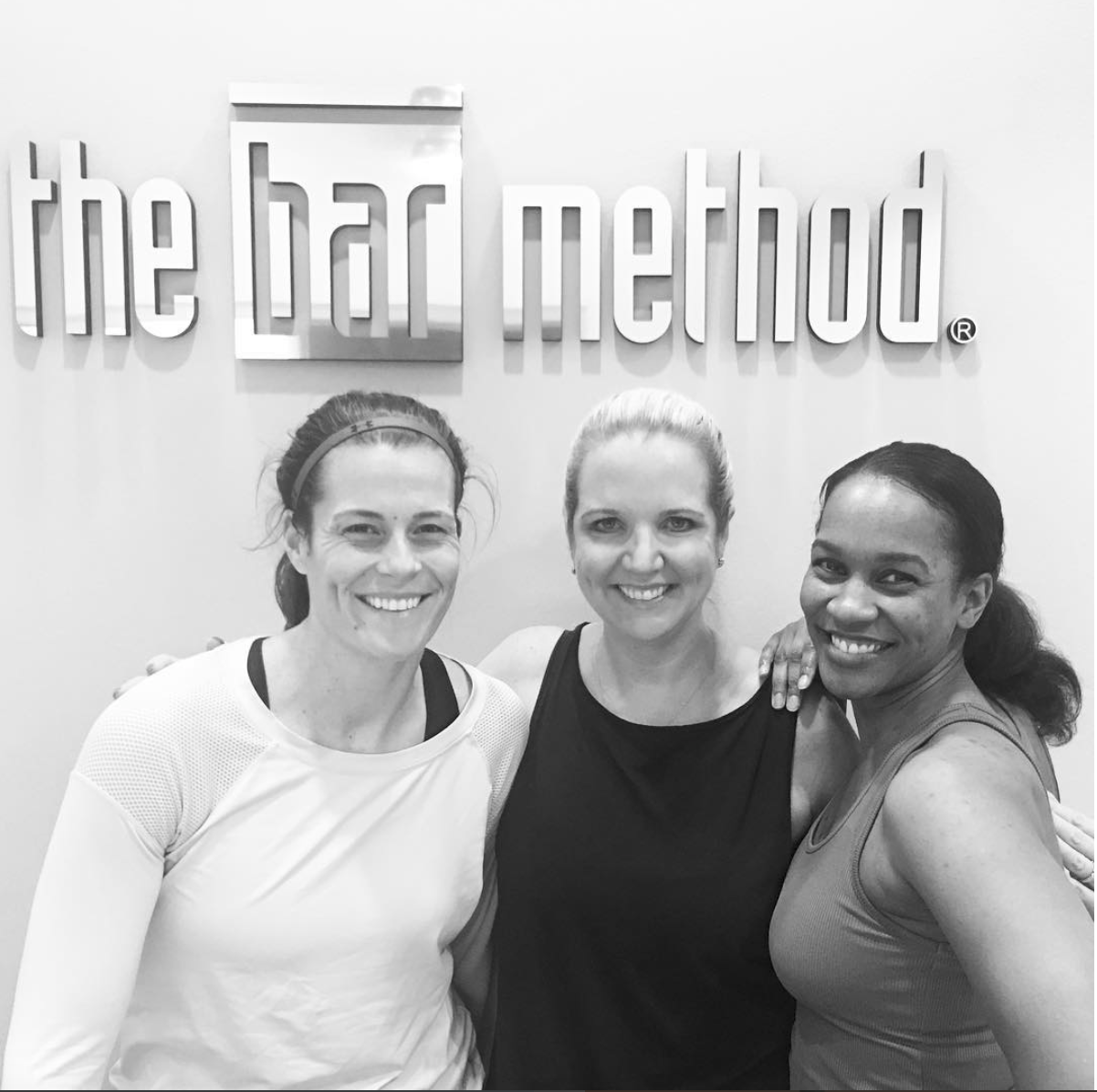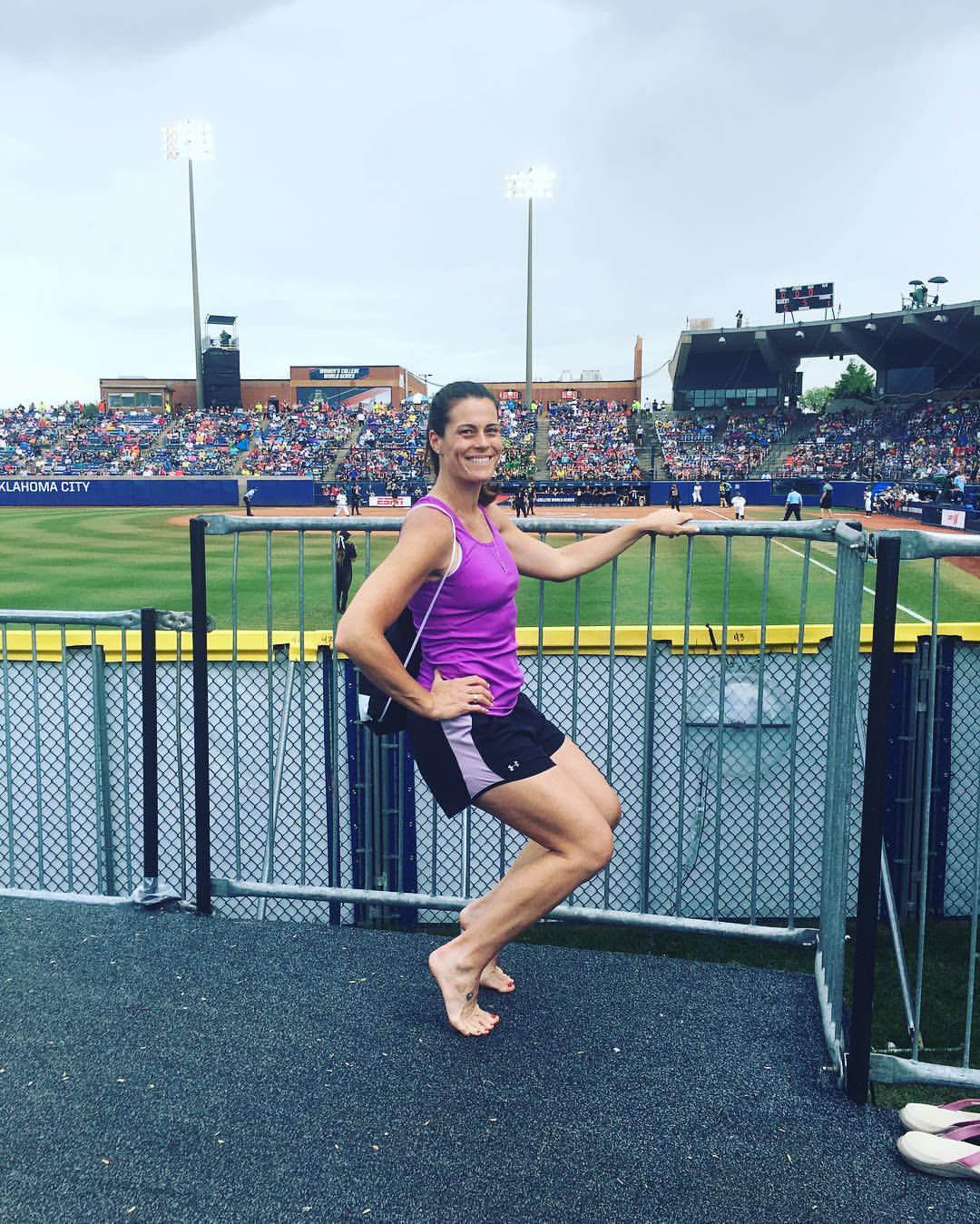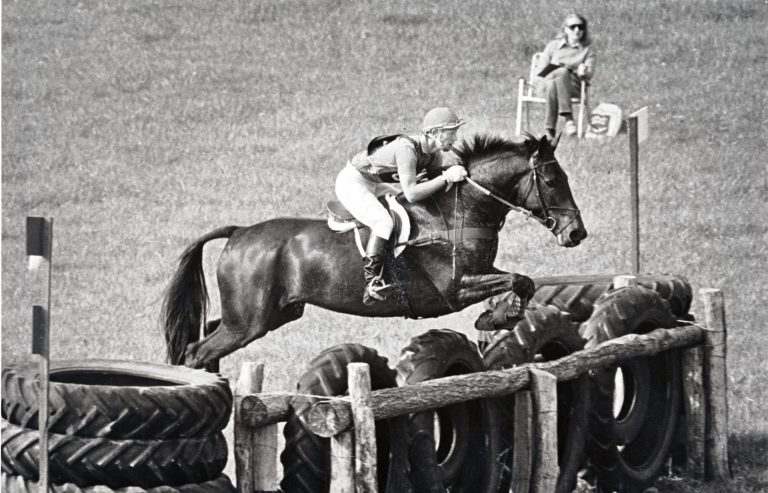Practical Horseman Associate Editor Jocelyn Pierce will be competing in the Mongol Derby, a 600-mile expedition considered the longest and toughest horse race in the world, in August. As she prepares, she’s reporting on her progress with weekly blogs here, www.JPMongolDerby.com and in Tips & Talk in Practical Horseman.
With a strap around the balls of my feet, I couldn’t keep my legs from shaking, nor get them totally straight during the final stretch of the hour-long workout. It was my first week of 6 a.m. barre class at the Bar Method in North Potomac, Maryland, and I had a long way to go to get to my goal of improved flexibility and core strength.
Over the past 11 months, exercise during the week totaled about 3 to 4 hours a day, while on weekends it was anything from 4 to 8 hours. This was part of my determination to get fit for the Mongol Derby, which as I write this, begins in less than a week. Here’s a quick overview of my fitness program:
During the week:
- I’ve always been a big fan of Shaun T and his high intensity interval training programs, so continued doing these workouts twice a week until May, when I amped up my saddle time
- A 4- to 5-mile hike or run (both at a local mountain) 2 to 3 times a week
- An hour-long ride on my mare every weekday, including a longe lesson every other week to work on leg strengthening and galloping technique
- Spin classes 1 to 2 times a week
- Bar Method classes 4 times a week
On the weekend:
- Endurance conditioning rides
- One hour-long ride on my mare
- 15+ mile hike
At the outset of my Derby exercise program, I had a good level of base fitness and knew that the best thing I could do to get Mongol Derby fit was saddle time. However, I recognized that there were some areas I could improve on out of the saddle, and one area I found really helpful was classes at the Bar Method. This workout focuses on core conditioning and isometric exercises, a type of strength training in which movements are done in static positions.
Why the Bar Method?
In addition to getting a good core and leg workout in, I wanted to improve my flexibility (helpful for hopping on and off squirrelly wild horses quickly) and my balance (helpful for staying on aforementioned wild horses). The Bar Method seemed liked the perfect fit.
My two primary instructors, Jen Sullivan and DeShaun Stallworth, are both lifelong athletes with competitive streaks and reputations of leading more difficult than average classes, which is exactly what I was looking for. For a group class, it was amazing how much one-on-one attention I got, and I felt like Jen and DeShaun were my personal trainers.

Jen was a softball pitcher for the University of Wisconsin Madison, and then went on to play softball in France for 2½ years. She became enthralled with the Bar Method while looking for something to do in the area while her son was at pre-school. “I began to compete with myself and started realizing the benefits of exercise without impact, especially as you age, how the flexibility, becoming supple and range of motion are so important,” Jen explained. “After a couple of months it started changing areas of my body I wanted to get to for forever and never knew how.”

DeShaun has a background in cheerleading, dance, drill team, and also ran track into college. She had already been a Bar Method student when she used classes as a way to get back in shape after having her second child. [The Bar Method] has the strength training and toning that I wanted with a stretching component,” Deshaun said. “A stretched muscle is a stronger muscle. Once you replace the oxygenated blood into your muscles where fibers have been torn, then it repairs itself in a healthy way and becomes stronger and less prone to injury.”
DeShaun also likes working out in a group setting as opposed to going to the gym solo. “The psychology of group classes—that’s where the motivation is,” DeShaun said. “You may have the worst face of pain, like ‘I can’t do this,’ and someone will be completely stoic next to you and you can pull from that, it will help you get through it.”

The standard format Bar Method class is a mix of isometric exercises and stretching, with “thigh and seat as the meat and potatoes of the program.” The premise is taking each muscle group in the sequence, working it until it’s depleted, then stretching it to create a lean muscle. “You need to stretch while your muscle is warm and that’s how you lengthen it. The Bar Method will never get easier and that’s the beauty of it. When you start to increase your flexibility, now you can get deeper into muscle you couldn’t reach before because you didn’t have the flexibility to get there,” Jen explained.
“People are often concerned we don’t get enough cardio—I disagree,” she continued. “They don’t quite understand that isometric contractions will burn way more than riding a bike. Our muscles are still burning all day after a class.”

“A lot of the Bar Method is about the mind-body connection,” DeShaun added. I found this to be another benefit to my riding and could feel rides on my own horse improving with better mind-body awareness.
The Bar Method has checked off the goals I hoped to reach. My flexibility has improved incredibly. I went from not quite being able to keep my legs straight in the strap stretch to almost doing the splits, a first for me, and I feel a difference in the saddle because of this increased flexibility, as well as more strength in my core and legs.
I slowly began to taper off my workouts (easier said than done) on July 23, beginning with nixing the cardio, followed by my last ride on July 26th and last class at the Bar Method on July 27th to give my body a little over a week to recuperate before pre-race training on Aug. 6.
I know there’s no real way to be 100 percent physically prepared for the Mongol Derby, but I hope the long hours in the saddle, fitness classes at the Bar Method and beyond and time spent outdoors in all kinds of weather will help.
Practical Horseman Associate Editor Jocelyn Pierce is competing in the Mongol Derby, a 600-mile expedition considered the longest and toughest horse race in the world, Aug. 8-27. Here’s how to follow the action, sponsored by Mane ‘n Tail and SmartPak:
• Visit Practical Horseman for daily race recaps and Jocelyn updates from 2017 Derby finisher Leslie Wylie
• Follow Jocelyn’s progress live via her GPS tracker, read official reports via the Derby website, and follow @mongolderbylive on Twitter
• Tune in for Derby Dot Watch Party podcasts presented by Horse Radio Network in partnership with Practical Horseman, broadcast live nightly at 8 p.m. EST










